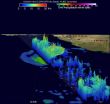(Press-News.org) Promotion of handwashing with soap and weekly nail clipping are both successful strategies to decrease intestinal parasite re-infection rates in school aged Ethiopian children, according to a study published by Mahmud Abdulkader Mahmud and colleagues from Mekelle University, Ethiopia, in this week's PLOS Medicine.
The researchers reached these conclusions by conducting a cluster randomized controlled trial in which 367 parasite-negative school-aged children in Northern Ethiopia were randomly assigned to either the handwashing intervention, the nail clipping intervention, both interventions, or neither intervention for 6 months. For the handwashing intervention, fieldworkers visited each intervention household weekly, encouraged all the household members to wash their hands with water and soap at key times such as before meals and after defecation, and checked on the household's use of soap. For the nail clipping intervention, the fieldworkers clipped the nails of children in the intervention groups every week.
After adjustment for factors likely to affect re-infection such as latrine use and drinking water source, 14% of the children in the handwashing with soap groups (handwashing alone and handwashing plus nail clipping) were re-infected with parasites compared to 29% of the children in the no handwashing groups (nail clipping only or neither intervention). Similarly, 17% of the children in the nail clipping groups were re-infected compared to 26% in the no nail clipping groups. Finally, handwashing (but not nail clipping) significantly reduced the rate of anemia among the children.
These findings support the implementation of proper handwashing and weekly nail clipping as a public health measure to reduce parasite re-infection rates in resource-limited regions. However, although both interventions were effective under trial conditions that included intensive monitoring and follow up, it is not clear if handwashing and nail clipping will work as well under real-life conditions.
INFORMATION:
Research Article
Funding: The study was funded by Mekelle University, Ethiopia and Alcala University, Madrid, Spain . The funders had no role in study design, data collection and analysis, decision to publish, or preparation of the manuscript.
Competing Interests: The authors declared that no competing interests exist.
Citation: Mahmud MA, Spigt M, Bezabih AM, Pavon IL, Dinant G-J, Velasco RB (2015) Efficacy of Handwashing with Soap and Nail Clipping on Intestinal Parasitic Infections in School-Aged Children: A Factorial Cluster Randomized Controlled Trial. PLoS Med 12(6): e1001837. doi:10.1371/journal.pmed.1001837
Author Affiliations:
Department of Medical Microbiology and Immunology, College of Health Sciences, Mekelle University, Mekelle, Ethiopia
Department of Family Medicine, CAPHRI School for Public Health and Primary Care, Maastricht University, Maastricht, Netherlands
Department of Public Health, College of Health Sciences, Mekelle University, Mekelle, Ethiopia
Catalan Institute of Health, Santa Coloma de Gramenet, Spain
Department of Surgery, School of Medicine, Alcala University, Madrid, Spain
IN YOUR COVERAGE PLEASE USE THIS URL TO PROVIDE ACCESS TO THE FREELY AVAILABLE PAPER:
http://journals.plos.org/plosmedicine/article?id=10.1371/journal.pmed.1001837
Contact:
Mahmud Abdulkader Mahmud
Mekelle University
Biomedical Sciences
Ayder
Mekelle, 1871
ETHIOPIA
muheab2008@yahoo.com
Tropical cyclones are not too common in the Arabian Sea, but tropical cyclone 01A, now renamed Ashobaa, formed this week. NASA/JAXA's Global Precipitation Measurement or GPM core satellite flew over Ashobaa and gathered data that provided a 3-D look at the rainfall in the storm.
The GPM core observatory satellite flew over Ashobaa on the morning of June 8 at 0811 UTC (4:11 a.m. EDT). Tropical cyclone Ashobaa had sustained wind speeds of about 40 knots (46 mph) when the satellite passed overhead.
On June 9 at 0900 UTC (5 a.m. EDT), tropical cyclone Ashobaa had maximum ...
MADISON, Wis. -- Scientists have prior evidence that the hormone estrogen is a major driver in the growth of cervical cancer, but a new study examining genetic profiles of 128 clinical cases reached a surprising conclusion -- estrogen receptors all but vanish in cervical cancer tumors.
This counterintuitive finding, reported June 8 in the online Proceedings of the National Academy of Sciences, further bolsters the understanding of cervical cancer's progression and offers valuable new targets to fight the disease.
Lead author Johan den Boon, associate scientist with ...
The economic impact of the Energy Department's National Renewable Energy Laboratory (NREL) was $872.3 million nationwide in fiscal year 2014, according to a study by the University of Colorado Boulder's Leeds School of Business.
The study estimates NREL's impact to Colorado's economy totaled $701 million, a decline of 1.6 percent from the prior year. The slight year-over-year drop was largely attributed to a decline in major construction spending that came as NREL completed the planned build-out of its sustainable campus.
Jefferson County, where the largest concentration ...
Two of our nation's most advanced wind energy research and test facilities have joined forces to help the wind energy industry improve the performance of wind turbine drivetrains and better understand how the turbines can integrate more effectively with the electrical grid.
Through a Cooperative Research and Development Agreement (CRADA), the Energy Department's National Renewable Energy Laboratory (NREL) and Clemson University will partner to share resources and capabilities in the operation and development of testing facilities. The CRADA also includes the exchange ...
DOWNERS GROVE, Ill. - June 9, 2015 - The percentage of U.S. female physician authors of original research in major gastroenterology journals has grown over time, yet the percentage of women in the senior author position remains lower than expected based on the proportion of female gastroenterologists in academia. A look at the evolution of gender in the GI publishing landscape is presented in "Female authorship in major academic gastroenterology journals: a look over 20 years," published in the June issue of GIE: Gastrointestinal Endoscopy, the monthly peer-reviewed scientific ...
SAN FRANCISCO--Seismologists studying the recent dramatic upswing in earthquakes triggered by human activity want to clear up a few common misconceptions about the trend.
There is increasing evidence that these earthquakes are caused by injecting fluids from oil and gas operations deep into the earth. These human-caused earthquakes are sometimes called "induced earthquakes."
A Seismological Research Letters focus section to be published online June 10 addresses some common misconceptions about induced seismicity--the biggest of which is that it is primarily related ...
Scientists at the University of York have made a significant advance that could make cell-based treatments for arthritis less of a lottery.
Researchers in the Departments of Biology and Physics at York, working with colleagues at the Erasmus Medical Centre in Rotterdam, have identified individual stem cells that can regenerate tissue, cartilage and bone.
The stem cells are mixed within human bone marrow stromal cells (MSCs) but are similar in appearance and previously, scientists had difficulty in distinguishing between them. The York researchers isolated individual MSCs ...
An unexpected finding by an international team of scientists based at The University of Manchester and National Institutes of Health in America has shed new light on how immune cells are programmed to either repair or protect the body.
It's hoped the discovery will inform the development of better treatments for a range of conditions from inflammatory bowel diseases (IBD) to certain cancers.
The research, led by Dr John Grainger from the Manchester Collaborative Centre for Inflammation Research (MCCIR) and Dr Yasmine Belkaid from the National Institute of Allergy and ...
Large magnetic storms from the Sun, which affect technologies such as GPS and utility grids, could soon be predicted more than 24 hours in advance.
Coronal mass ejections (CMEs) are eruptions of gas and magnetised material from the Sun that have the potential to wreak havoc on satellites and Earth-bound technologies, disrupting radio transmissions and causing transformer blowouts and blackouts.
These mass ejections can cause problems with GPS technology - used by all kinds of vehicles, from cars to oil tankers to tractors. For example, they can affect the ability of ...
What:
The Makona strain of Ebola virus (EBOV) circulating in West Africa for the past year takes roughly two days longer to cause terminal disease in an animal model compared to the original 1976 Mayinga strain isolated in Central Africa, according to a new National Institutes of Health (NIH) report. The results provide important information to scientists who have wondered if the Ebola virus in West Africa is becoming more severe. In fact, the new study suggests the current virus has a decreased ability to cause disease in their animal model compared to the 1976 strain.
Using ...

